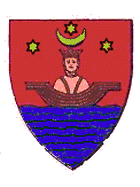A History of (fictional) Dunwich
 In which CJ makes a very peculiar blend of truth and fiction for the setting of his Vampire game - bet you can't work out which is which!!!
In which CJ makes a very peculiar blend of truth and fiction for the setting of his Vampire game - bet you can't work out which is which!!!
Dunwich (pronounced Dun-Itch) is a seaport and seaside resort in the county of Suffolk in England, with a natural harbour formed by the mouths of the River Blyth and the River Dunwich. Dunwich is today one of the largest ports in eastern England, with a population of around 53,000 (1988), though it is less important as an international port than nearby Harwich and Felixstowe.
Initially settled by the Romans who built a now lost fort here called Sitomagus ("the place of the Magi"), Dunwich grew large because of its position as a convenient harbour on the North Sea, making it attractive to Saxon settlers, who had founded a town here by 600 AD. Further down the coast is the site where the Sutton Hoo treasure was found, and the area is rich in finds of Anglo-Saxon artefacts. In the Norman period, the town continued to prosper, and an entry exists in the 1086 Domesday Book.
The twelfth century saw the construction of the great walls of Dunwich, some of which still stand to this day, by Hugh de Burgh. Tragically, 1191 saw a shameful episode when, following a blood libel (claims that they sacrificed a Christian boy named Guy whose body was found in a well), there was a massacre of forty citizens, despite the best efforts of Bishop Grace to prevent it. This followed similar pogroms against the Jews at Bury St. Edmunds, Suffolk, and King's Lynn, Norfolk. Following the revolt of Hugh de Burgh against the King, the small motte and bailey castle was slighted, and it was never rebuilt. However, the impressive earth mound Castle Hill still towers over the estuary and town, surmounted by a small wood and Girsham's Folly, an eighteenth-century mock ruined tower built by a minor member of the Hellfire Club in 1775.
King John granted Dunwich its Charter in 1208, which provided for the Thursday Market, and in the next four centuries it made most of its wealth trading Suffolk woollen cloth with the Continent while maintaining a strong fishing fleet, rivaling those of Ipswich and Great Yarmouth. Other main exports were grain, and the main imports were fish, furs, and timber from Iceland and the Baltic region, cloth from the Netherlands, and wine from France.
Modern Dunwich
An attractive East Anglian port city, best known for its historic Cathedral, Dunwich is still a popular seaside resort in season, and a commercially successful harbour town, returning an MP and a Euro MP in Dunwich (sometimes referred to as Coastal Suffolk) constituency. In 1988 the post is held by Arthur Murray-Fforbes, who represents the Conservative Party and was elected by a majority of 12,000. The Town Council represents 12 wards in the Borough, with 7 Conservatives, 3 Labour, one Liberal, and an Independent councillor. The current mayor is Councillor Geraldine Mournley (Con).
Dunwich Centre contains a mix of architectural styles, from well-preserved medieval buildings like St. Crispin's Guildhouse to Elizabethan black and white timbered buildings, through to the modern concrete glass and gleaming metal of the office buildings, bus station, and mall. Much of the town centre architecture is Georgian, though the outlying housing tends to be Victorian as are the houses which overlook the front on Cliffview Road, many of which are today boarding houses catering to the tourist industry. The whole town is dominated by the towering Gothic Cathedral, one of the finest examples of medieval Gothic in Britain, the exterior largely untouched except for the Victorian Gothic extension to the Nave, which fortunately complements the existing building.
Industry
Dunwich is still a flourishing port today, handling just under a million tonnes of cargo each year. It is the site of three breweries, belonging to Tolly Cobbold, Greene King, and Adnams, which are major employers, as is the Dunwich Sugar Beet Factory, whose concrete silos dominate the skyline. The pumping of treated waste from this factory into the North Sea by the concrete-encased outflow pipe remains controversial, but the "White Pier" can be walked some two hundred yards into the North Sea by the foolhardy who risk being washed away by surging waves.
Sport
Dunwich has never had much luck with its football team, Dunwich City Football Club. Established in 1898, the team enjoyed little success, with a history of Third and Fourth Division success at best. Playing in green, grey, and white striped shirts at the London Road Stadium, their main rivals are Norwich City F.C. and Ipswich Town F.C, both notably better teams.
Dunwich has a more successful Speedway team, the Dunwich Devils, who are based at their Catchpole Stadium track, on the outskirts of Dunwich, for over 50 years. Greyhound racing also takes place at the Catchpole Stadium and is often better attended.
Dunwich Heath, a gorse-covered sandy area just to the west of the town filled with small woods proves a popular recreational area, both for locals and tourists. It is popularly said to be haunted by the spirit of an executed 18th-century soldier, the drummer "Black Toby", and by "Black Shuck", the folkloric hell hound of East Anglia. The remains of the gibbet mentioned by James in his travelogue may have led rise to such stories.
Last Updated 14th December 2005.